Included in this analysis:
- Summary
- Overview
- Strategic plan
- Sales in 2024
- Brand strategy & joint ventures
- Production developments
- Outlook
- Downloadable data (Excel)
- Production by brand (2020-2024)
- Production forecasts by brand (2020-2029)
Summary
- GM reported a 6.4% rise in consolidated wholesales for 2024 to 4.01 million units, while retail sales fell 3.0% to six million units.
- The company can now be considered a regional player in the global automotive industry, having divested its European arm and ended operations in India, Indonesia, Thailand and Vietnam.
- GM is scaling back its Chinese operation substantially, including the closure of an assembly plant in February 2025 and the expected winding down of Chevrolet’s presence. However, withdrawal is not currently a consideration; the company is making a determined push to support the Buick and Cadillac brands and restore its Chinese joint ventures to sustainable profit.
- The same cannot be said for GM’s Korean operation, which is again the subject of rumours and speculation about a possible closure. The current combination of newly imposed US import tariffs, changes in Korea’s labour laws, and a joint venture with Hyundai may lead GM to pull the plug, but not within the forecast period.
- As expectations for the electric vehicle (EV) sector have undergone a reset, at least in North America, so too have GM’s electrification plans. It began slowing its transition even before US President Donald Trump’s second term, and the near-term outlook for EVs in North America has only weakened since.
- GM’s ambitious 2030 targets continue to look increasingly optimistic four years after they were set out in 2021.
- The company has also anticipated that auto business margins will improve as EVs scale and battery costs decline. However, competition in the EV sector may prove every bit as fierce—perhaps more so—than the traditional car-making sector, constraining the opportunity for such margin improvements.
Forecast
- Global output of GM’s wholly owned brands is expected to fall by about 2.5% in 2025, with lower production in all its major markets.
- A further decline is expected in 2026 before growth returns the following year and recovery accelerates in 2028.
- As electrification plans change, launch deferrals and programme cancellations have been a more common feature of the past two years and clearly pose a risk to the forecast.
Overview
GM’s retail sales fell 3.0% in 2024 to six million units, following a rise in 2023. The sales figure includes sales of vehicles produced by non-consolidated joint ventures. Looking at consolidated wholesales, there was a 6.4% rise to 4.01 million units following a 5.3% rise the previous year.
The company has shown a new determination to act quickly and decisively in order to improve its performance. Examples include: the divestment of GM Europe and the withdrawal of Chevrolet from Europe; and pulling out of India, Indonesia, Thailand and Vietnam. This production forecast anticipates further restructuring in China, discontinuing the struggling Chevrolet brand and focusing resources on Buick and Cadillac.
GM contends that its withdrawal from unprofitable markets allows it to target resources towards the development of new technologies, as well as enabling it to conserve resources as the North American market entered a downturn.
These are valid points, but the decisions to abandon loss-making markets seem inconsistent with the notion of GM as a global player. It also raises the question of why some automakers can succeed in the abandoned markets if GM cannot, such as Hyundai and Kia’s recent success in growing their initially small market shares in Europe and India.
If GM has concluded that it simply does not have and cannot develop the business model to compete effectively in such markets, then perhaps it has been right to withdraw. But if it cannot compete against, for example, Hyundai in Europe, is it confident that it can continue to do so in its remaining markets? In the near term, the answer is unquestionably ‘yes’, but ten or 20 years of hindsight might change this assessment.
GM has been investing substantial sums for the development and manufacture of EVs, previously advising that 2023 would mark Phase 2 of its EV transformation, with five launches planned. However, fierce price competition and weakening demand in the EV sector caused the automaker to slow the pace of investment and EV launches.
This scaling back has continued into 2025: in June, the company dropped its target of producing only EVs by 2035. The flip side is that GM will continue to make strong profits from its traditional business and returning significant capital to shareholders.
Strategic plan
Since October 2021, GM’s targets have included:
- Revenue growth with improved diversification:
- Doubling annual revenues from a five-year average of about US$140bn;
- Software and new businesses growing at nearly 50% CAGR through 2030;
- Core auto business driving growth.
- Margin expansion:
- Delivering margins of 12-14%;
- Core auto business margins to expand as EVs scale, battery costs decline, and new software and business platforms ramp up.
- EV revenue to grow from about US$10bn in 2023 to approximately US$90bn annually by 2030
- Connected vehicles and other new businesses drive more than US$80bn in new, incremental revenue
- Commercialisation of Cruise:
- Delivering US$50bn in revenue annually by the end of the decade.
- Internally funded capital spending:
- Annual capital spending, including investments in Ultium joint ventures, of US$9-10bn in the medium term.
- Maintaining a strong balance sheet:
- Allowing the company to invest in its growth priorities while maintaining an investment grade rating.
These targets continue to look highly optimistic. For example, Cruise revenue in 2024 was just US$257m, and its ambition has been substantially scaled back. Expectations for the EV sector have also undergone a reset, with GM slowing its transition before President Trump’s second term, and the near-term outlook for EVs in North America has only weakened since.
Sales in 2024
GM’s retail sales fell 3.0% in 2024 to six million units, as a 5.2% rise in North America was more than offset by falls in other major regions. The fall followed a rise in 2023 after six successive years of decline from the 2016 cyclical peak of ten million. The sales figure includes sales of vehicles produced by non-consolidated joint ventures. Looking at consolidated wholesales, there was a 6.4% rise to 4.01 million units following a 5.3% rise the previous year.
GM unit sales by region (000s)
| Region | 2015 | 2016 | 2017 | 2018 | 2019 | 2020 | 2021 | 2022 | 2023 | 2024 |
| GM North America | 3,613 | 3,630 | 3,576 | 3,490 | 3,367 | 2,924 | 2,574 | 2,680 | 3,055 | 3,215 |
| % GM total | 36.2 | 36.3 | 37.3 | 41.6 | 43.6 | 42.8 | 40.9 | 45.1 | 49.4 | 53.6 |
| GM Europe | 1,099 | 1,161 | 685 | 4 | 4 | 1 | 1 | 2 | 2 | 2 |
| % GM total | 11.0 | 11.6 | 7.1 | 0.0 | 0.1 | 0.0 | 0.0 | 0.0 | 0.0 | 0.0 |
| China | 3,730 | 3,914 | 4,041 | 3,645 | 3,094 | 2,901 | 2,892 | 2,303 | 2,099 | 1,839 |
| % GM total | 37.4 | 39.1 | 42.1 | 43.5 | 40.1 | 42.5 | 45.9 | 38.8 | 33.9 | 30.6 |
| GMSA | 645 | 583 | 669 | 690 | 669 | 470 | 394 | 451 | 456 | 424 |
| % GM total | 6.5 | 5.8 | 7.0 | 8.2 | 8.7 | 6.9 | 6.3 | 7.6 | 7.4 | 7.1 |
| GM International | 899 | 720 | 629 | 557 | 584 | 530 | 435 | 505 | 576 | 521 |
| % GM total | 9.0 | 7.2 | 6.6 | 6.6 | 7.6 | 7.8 | 6.9 | 8.5 | 9.3 | 8.7 |
| Total | 9,986 | 10,008 | 9,600 | 8,386 | 7,718 | 6,826 | 6,296 | 5,941 | 6,188 | 6,001 |
Brand strategy
GM currently has five wholly owned brands.
Brightdrop
Sales for the Zevo 600 (formerly EV600) and Zevo 400 (EV410) have been negligible: only 1,530 units in 2024, and production at the Ingersoll, Ontario plant has been suspended for six months from April 2025.
Under a joint venture with Hyundai, a new electric van will be co-developed, with Hyundai taking the lead. This might offer the opportunity to discontinue Brightdrop, but GM insists the new van will be smaller and won’t be a replacement for Brightdrop models.

Buick
The Buick brand enjoys a near-premium image in China, but sales have fallen steeply in recent years: from 817,300 in 2021 to 365,500 in 2024. Buick has slipped from fourth/fifth in the brand sales ranking to 20th.
In North America, Buick has been trying (with some success) to shed its long-term image as a car for the elderly, conservative buyer. This process of brand rejuvenation has been helped by the launch of crossover models such as the Enclave, Encore, Envision and Envista.
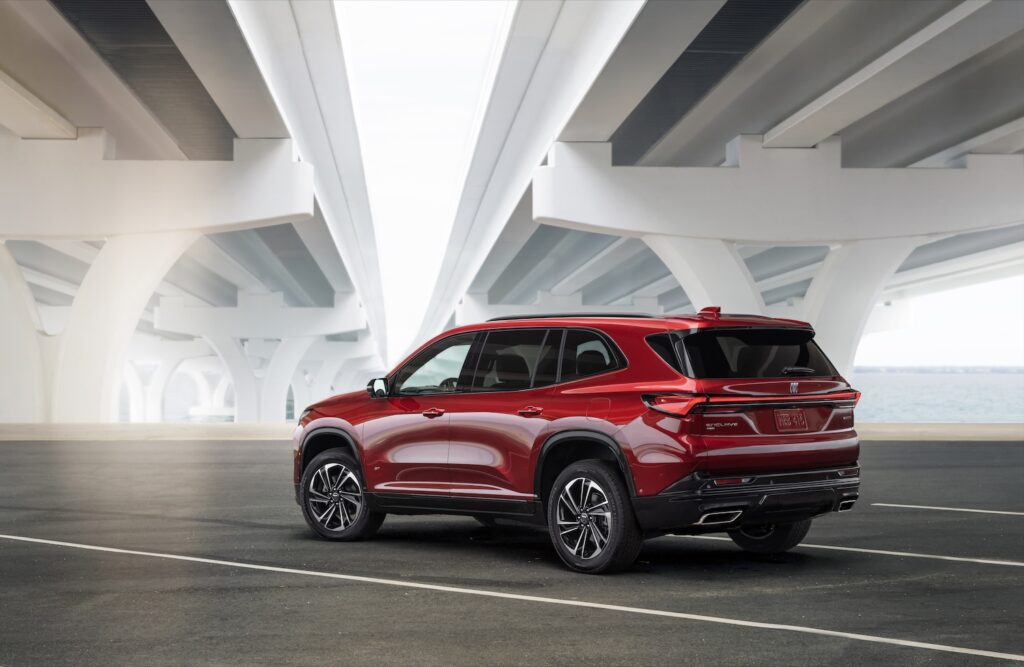
Outside China and North America, the Buick brand is barely known.
Regarding Buick battery EVs (BEVs):
- Electra E5 BEV compact crossover launched in 2023, followed by the slightly smaller and more coupe-styled Electra E4. Both models are built in China and were expected to launch in North America in 2024 or 2025, but tariffs and weaker demand for EVs have caused the launches to be delayed, with cancellation a possibility.
- The first Buick BEV in North America is now not expected until 2027/28.
Key takeaways from the Buick Brand Day held in China during April 2025:
- Electra to become a sub-brand for the Chinese market, also named “Zhi Jing” in Chinese. It will focus on high-end new-energy vehicles (NEVs) and release six models over the next 12 months.
- One of the six new models, the Encasa MPV, will launch later in 2025.
- Introduction of Xiao Yao, a new ‘super architecture’. It will underpin the forthcoming Electra models and support BEV, plug-in hybrid, and range-extender powertrains.
In the US the Buick dealer network has been restructured with about half the 2,000 dealerships choosing to give up the franchise rather than invest in the switch to EVs. GM’s buyouts of these dealers incurred charges of US$964m in 2024, US$569m in 2023, and US$511m in 2022.
Cadillac
GM is pushing Cadillac as its global luxury brand, but more than 95% of the 310,000 units it sold globally in 2024 were in North America and China. However, Cadillac is trying to enlarge its sales footprint: in October 2023, the company launched an all-electric, direct-to-consumer business in Switzerland, subsequently adding France, Germany, Sweden and (imminently) the UK.
When it comes to EVs, Cadillac is intended as GM’s lead brand and had planned to offer an all-electric line-up by 2030. It has since altered this plan, saying it will listen to the customer and let market demand guide its transition to EVs.
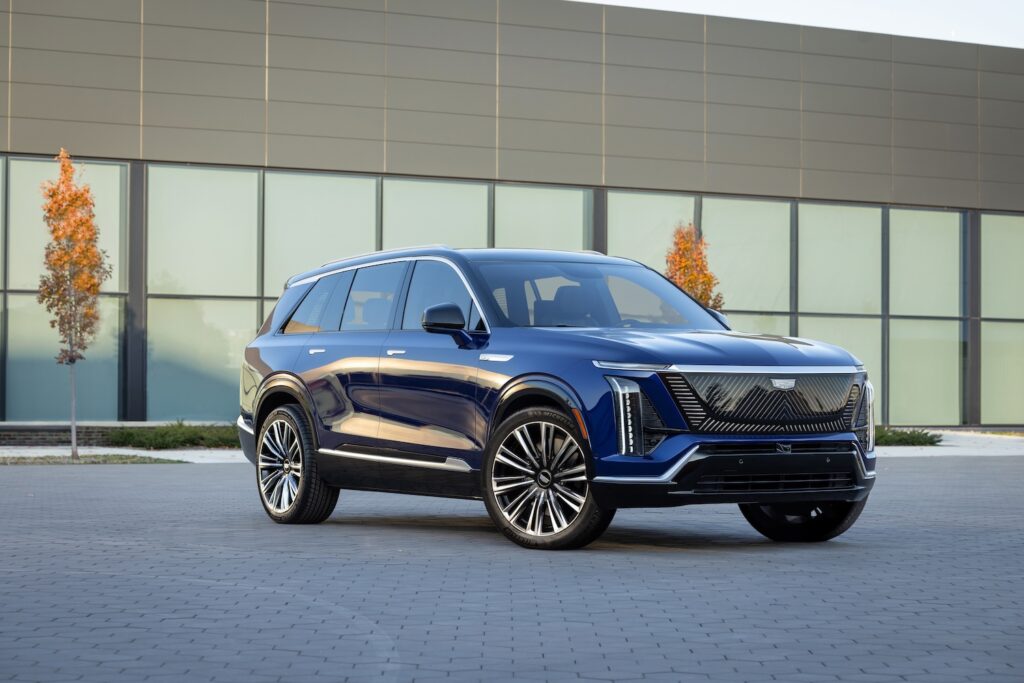
The brand’s first BEV was the Lyriq, a mid-sized crossover BEV launched in early summer 2022, followed by the Celestiq luxury model and the China-built Optiq crossover in 2023. In 2024, the Optiq also entered production in Mexico, as well as an electric variant of the Escalade at the end of the year. The Vistiq, a mid-size crossover, started production in the US in February 2025, with Chinese production starting later.
Chevrolet
Known outside North America for its small cars such as the Aveo and Spark, which were Daewoo models in their first iterations.
GM was pushing Chevrolet as its global mass market brand, but the decisions to withdraw it from Europe, several Asian markets and Africa conflict with this aim. This point is only reinforced by its expected withdrawal from China, where it slipped to 58th place in the 2024 sales table, compared to 13th in 2018. Production of most models has already ended, with no further production likely beyond 2025, except for the SGMW-produced and export-only Aveo/Sail.
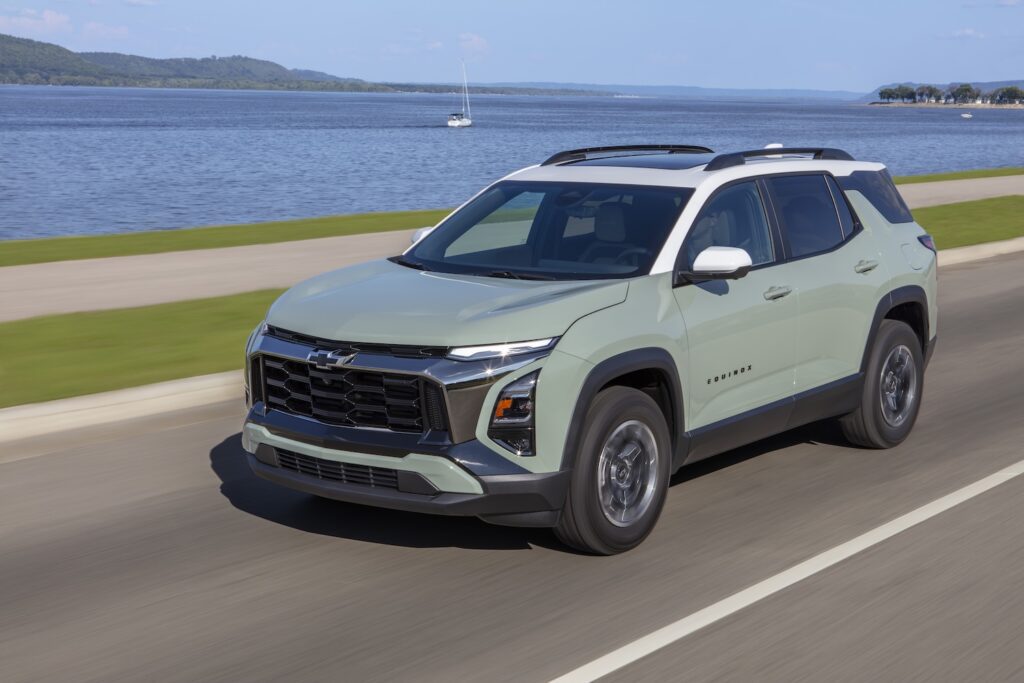
Regarding Chevrolet EVs:
- Bolt was discontinued at the end of 2023, but a second-generation model is expected in 2026.
- Equinox EV started production at Ramos Arizpe near the end of 2023 and was Chevrolet’s best-selling electric model in 2024, when the brand’s total EV sales in the US were 68,044 units, yielding a sector market share of 5.2%.
GMC
The brand is evolving to offer more fuel-efficient trucks and crossovers, including the Terrain small SUV and Acadia crossover. GMC produced nearly 700,000 units in 2023, similar to 2022. The all-new GMC Hummer EV SUT pick-up entered production in December 2021 and was followed by the Hummer EV SUV in 2023.

Joint ventures
GM’s Chinese operation contributed just under 31% to its global vehicle sales in 2024, down from 46% in 2021. The vehicle manufacturing and sales operations were conducted through the following joint ventures:
- SAIC-GM-Wuling (SGMW) Automobile: GM China holds a 44% stake, Shanghai Automotive Industry Corporation (SAIC) 50.1%, and Wuling Automotive 5.9%.
- 2024 sales: 1.31 million vehicles, up from 1.23 million in 2023 but down from 1.61 million in 2021.
- Shanghai-GM (SGM): 50% investment each from SAIC and GM.
- 2024 sales: 524,000 units, down from 870,000 in 2023, and continuing a downward trend since the 1.48 million achieved in 2019.
- Main ventures in which SGM holds 50% stake and GM China and SAIC each hold 25%:
- Shanghai GM (Shenyang) Norsom Motors manufactures the Buick GL8 and Verano, Chevrolet Captiva and Cruze, and other models.
- Shanghai GM Dong Yue Motors manufactures the Chevrolet Sail 3, Buick Envision, Encore, and other models.
Baojun
The all-electric brand’s range was renewed in 2023 with the introduction of the small Baojun Yep SUV, followed by the Baojun Yunduo compact hatchback.
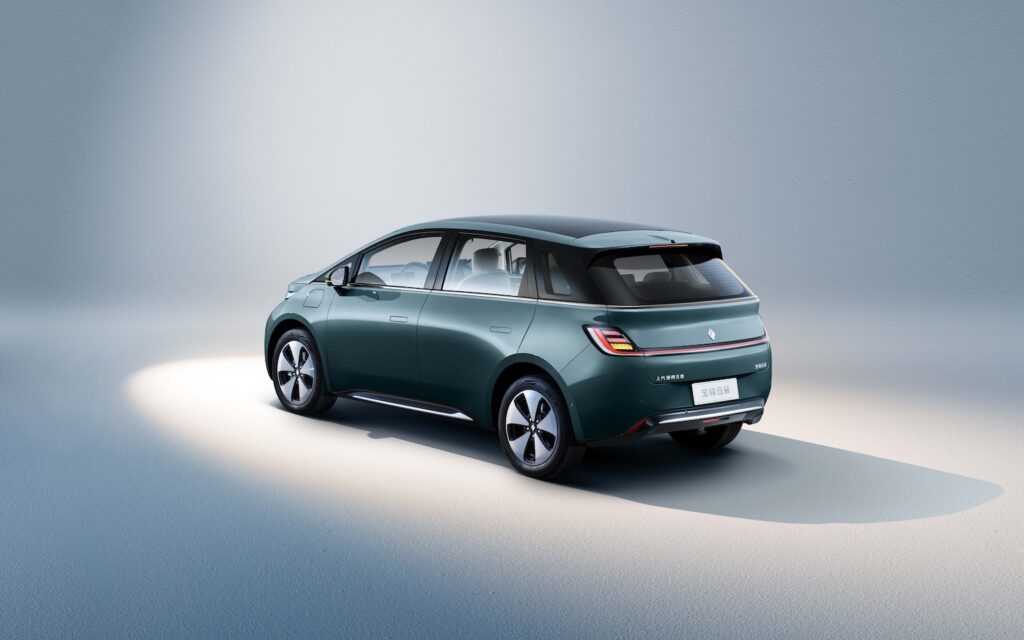
In 2024, the range was further expanded with a larger, five-door alternative to the Yep, named Yep Plus, and a plug-in hybrid and electric SUV, the Baojun Yunhai. The Xiangjing mid-size sedan has been added in 2025.
Sales have dwindled in recent years from a peak of more than one million units to around 135,000 in 2024. Although the brand is China-only, Baojun does make some Chevrolet-branded cars for export.
Wuling
Wuling has enjoyed strong sales in China, with its Hongguang range the country’s best-seller for many years. Traditionally an entry-level brand, SGMW has divided its range into Red Badge and Silver Badge models since 2020. Red Badge models are aimed at the brand’s traditional market segments—light commercial vehicles or entry-level passenger vehicles—while Silver Badge models are more premium passenger cars for global markets.
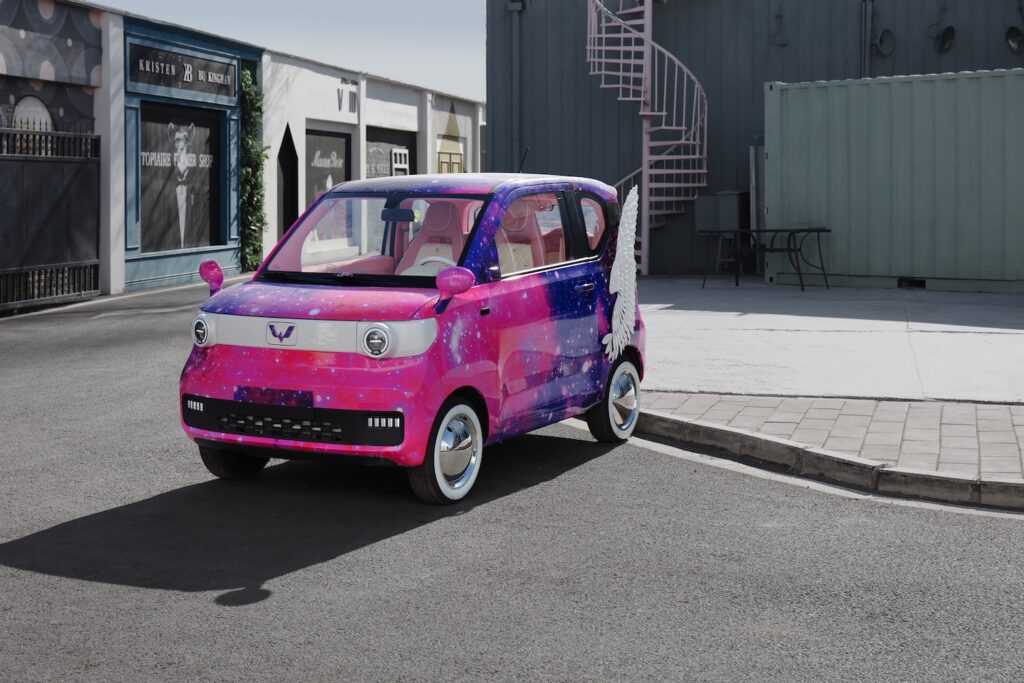
Collaboration with Hyundai
In September 2024, GM and Hyundai Motor Company announced plans to collaborate on vehicle and engine production, including electric and hydrogen technologies. They will also investigate combined sourcing of battery materials and steel.
The extent of the collaboration became clearer in August 2025, with the announcement that they will co-develop five new vehicle models for the Americas, including a compact SUV, a car, a pick-up, a mid-size pickup for Latin America, and an electric commercial van for North America. These are all scheduled to launch around 2028.
The collaboration will leverage shared platforms, with design and production responsibilities distributed between the partners. GM will lead the development for the mid-size truck, while Hyundai will take on compact vehicles and the electric van (see Brightdrop).
Production developments
GM’s global presence has been substantially redefined and refocused over the past decade as operations for which it could see little prospect of profitable growth were terminated. The reduced global footprint leaves GM as a substantial regional player rather than the truly global automaker it once was.
China
In Q4 2024, GM booked a non-recurring charge of US$4bn in respect of restructuring and write-downs at its Chinese joint ventures, including the closure of a plant in Shenyang, which was shuttered in February 2025. The Shenyang plant’s closure leaves GM with three production complexes in China: Shanghai, Yantai and Wuhan. The company has indicated that further restructuring charges could apply in 2025 but no further closures have been announced.
North America
GM and LG have opened two EV battery plants in the US—Ohio in 2022 and Tennessee in 2023—but a third, originally due to open in 2025 in Michigan, has been put on hold.
In June 2025, the company announced a US$4bn investment in its US plants over the next two years, mainly aimed at boosting production of gasoline-powered models and domestic manufacturing in response to tariff changes:
- At Orion Assembly and Orion Township in Michigan, GM will begin production of gasoline-fuelled full-size SUVs and light duty pickup trucks in early 2027 to help meet strong demand.
- As a result, GM’s Factory Zero in Detroit-Hamtramck, Michigan, will be the dedicated assembly location for the Chevrolet Silverado EV, GMC Sierra EV, Cadillac Escalade IQ, and GMC Hummer EV pickup and SUV.
- Fairfax Assembly, Kansas City, will support production of the gasoline-fuelled Chevrolet Equinox beginning in mid-2027.
- Sales of the recently redesigned Equinox were up more than 30% in Q1 2025.
- Fairfax remains on track to begin building the 2027 Chevrolet Bolt EV by the end of 2025.
- GM expects to make new future investments in Fairfax for GM’s next generation of affordable EVs.
- Spring Hill Manufacturing, Tennessee, will add production of the gasoline-fuelled Chevrolet Blazer in 2027, alongside the Cadillac Lyriq and Vistiq EVs, and the Cadillac XT5.
- Both the Blazer and Equinox are produced in Mexico, but there has been no announcement of any impact on the Mexican plants.
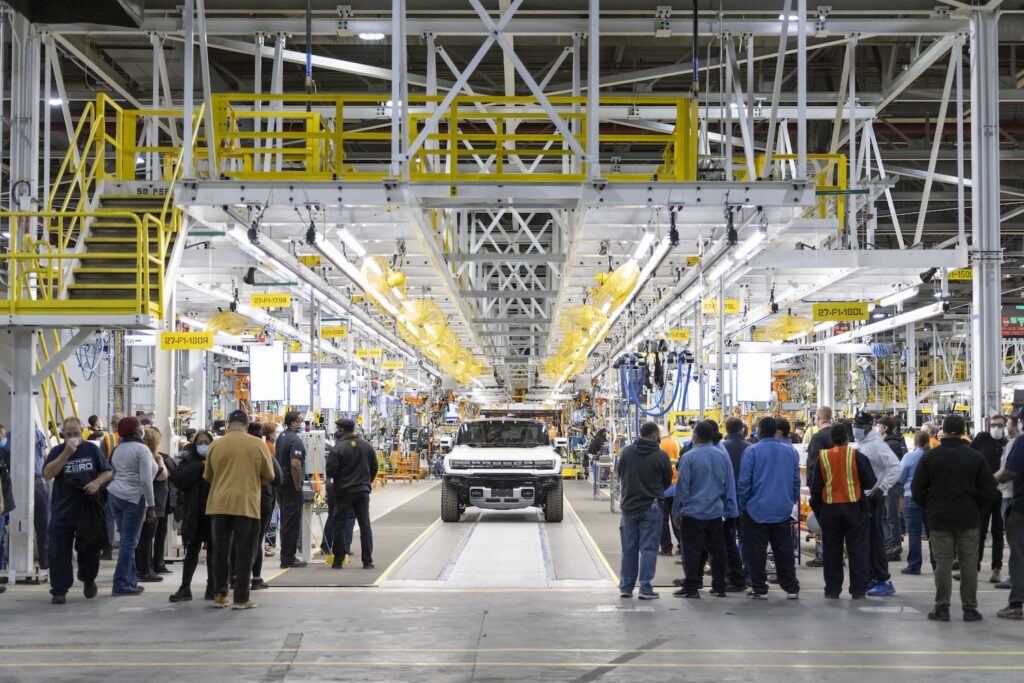
The US$4bn investment in new capacity for gasoline-powered models is significant for its implicit recognition that GM’s previous aim to end production of internal combustion engine vehicles by 2035 is not currently realistic.
South America
GM is investing BRL 7bn (US$1.4bn) in its Brazilian operation from 2024 to 2028. A significant portion of the investment is for upgrading plants. The Gravataí plant will receive BRL 1.2bn for modernisation and production preparation of a new Chevrolet Onix SUV, scheduled for 2026. This investment will also benefit the production of the current Onix and Onix Plus.
BRL 5.5bn will be allocated to the São Caetano do Sul and São José dos Campos plants to prepare them for production of hybrid cars, including mild hybrid and plug-in models. Additionally, an estimated BRL 300m will be allocated to the engine plant in Joinville, aiming at upgrades to support the production of new and more efficient powertrains.
South Korea
During 2025, GM has announced the closure of several company-owned service centres in Korea and the sale of several unused properties and facilities at its Bupyeong assembly plant. This has raised fears that GM is planning to close the operation, particularly in view of possible US tariffs.
In 2024, GM Korea sold 499,560 units, of which 418,790 were exports to the US. In May 2025, the company said it had a current tariff exposure of US$4-5bn, including about US$2bn related to South Korea.
GM makes four Chevrolet and Buick crossovers at former Daewoo facilities in South Korea: Buick’s Encore GX & Envista and Chevrolet’s Trailblazer & Trax, most of them for export to the US.
In 2018, GM’s Gunsan plant was closed, but the company agreed a plan with unions and other stakeholders to stay in the country and turn the business around. Under the terms of the agreement, GM cannot exit its investment until 2028.
Co-operation with Hyundai may have significance for GM Korea: the former might take over the latter’s role in developing and producing small cars. The planned 2028 launch date for the joint venture models coincides with the expiry of GM’s 2018 commitment.
While there is a risk that the Korean operation could be wound down before the end of 2025-2029, Automotive World’s forecast assumes the operation will continue.
Outlook
Global output of GM’s wholly owned brands is expected to fall by about 2.5% in 2025, with lower production in all its major markets. A further decline is expected in 2026, mainly due to a projected decline in overall North American demand, though output in China and South America is expected to improve. A return to growth is forecast for 2027, with the recovery accelerating in the following two years.
It should be noted that GM—like most of its peers—is in a particularly volatile time in terms of product planning, as its electrification plans (at least in North America) have been substantially changed as previous assumptions on both consumer-pull and regulatory-push have been upended. Launch deferrals and programme cancellations have been a more common feature of the past two years and clearly pose a risk to Automotive World’s latest forecast.
Details of model plans and production by model by country are included in the appendices to this report.
GM production by country, 2020-29 (000 units)
| Country | 2020 | 2021 | 2022 | 2023 | 2024 | 2025 | 2026 | 2027 | 2028 | 2029 |
| USA | 1,590 | 1,489 | 1,815 | 1,694 | 1,760 | 1,702 | 1,637 | 1,690 | 1,903 | 1,935 |
| China | 1,376 | 1,345 | 1,182 | 1,031 | 598 | 560 | 665 | 844 | 916 | 876 |
| Mexico | 747 | 559 | 743 | 723 | 843 | 841 | 802 | 730 | 744 | 721 |
| Brazil | 346 | 406 | 488 | 518 | 499 | 487 | 515 | 632 | 693 | 677 |
| South Korea | 359 | 291 | 302 | 453 | 463 | 459 | 451 | 437 | 437 | 475 |
| Canada | 161 | 52 | 119 | 159 | 173 | 105 | 93 | 95 | 124 | 124 |
| Argentina | 24 | 34 | 34 | 41 | 31 | 26 | 47 | 49 | 44 | 42 |
| India | 45 | 0 | 0 | 0 | 0 | 0 | 0 | 0 | 0 | 0 |
| Thailand | 32 | 0 | 0 | 0 | 0 | 0 | 0 | 0 | 0 | 0 |
| Russia | 11 | 0 | 0 | 0 | 0 | 0 | 0 | 0 | 0 | 0 |
| Grand Total | 4,691 | 4,177 | 4,683 | 4,618 | 4,367 | 4,288 | 4,209 | 4,477 | 4,861 | 4,850 |
